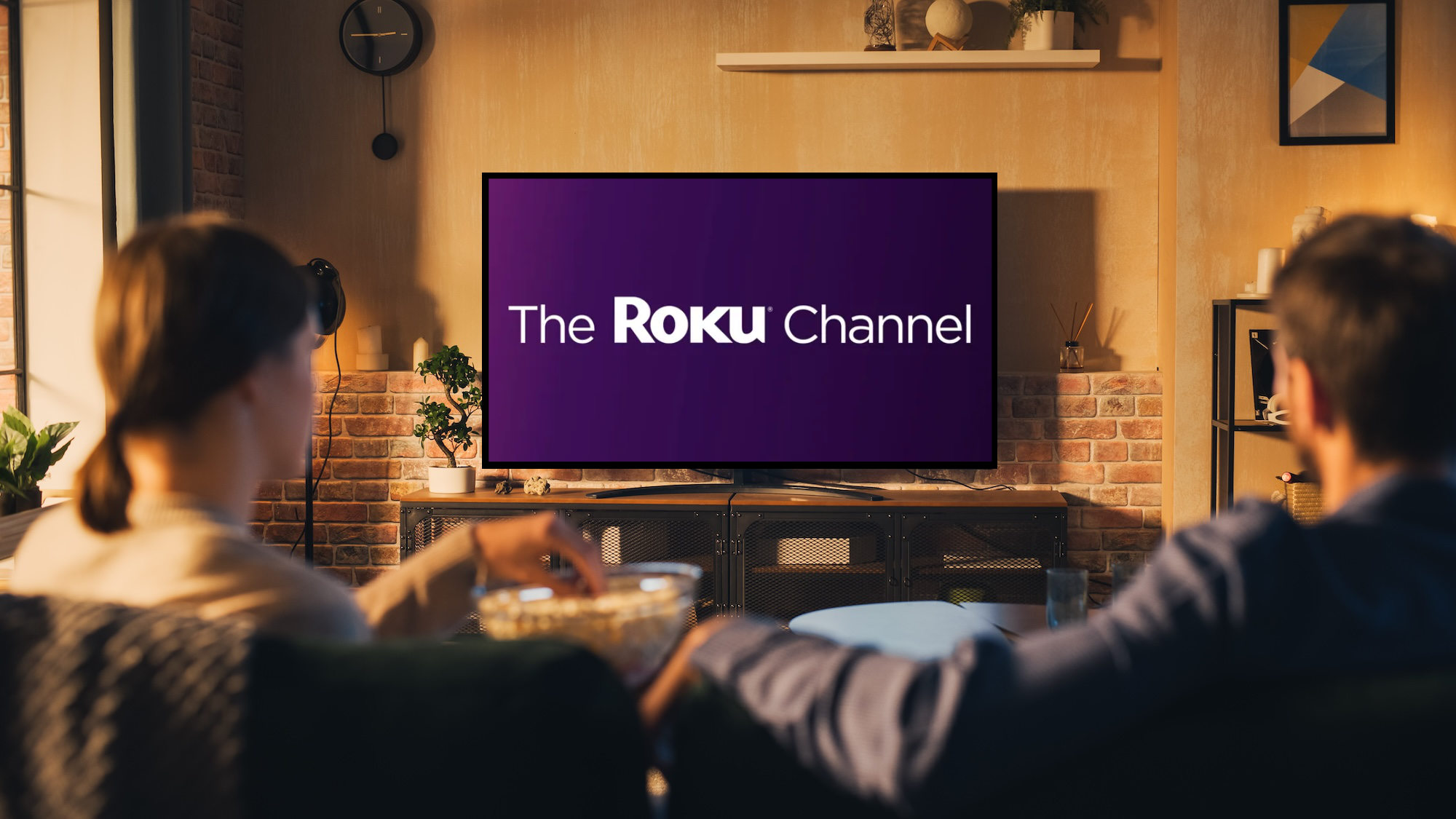Finding fantastic entertainment at no cost can feel like a real treat, can't it? Lots of people are looking for ways to enjoy their favorite films and shows without spending a fortune. That's where the idea of high-definition content comes into play, especially when we talk about free movie streaming. It's almost like a treasure hunt, trying to find those clear, vibrant pictures that make watching so much better. This guide is here to help you understand what high definition truly means and how you might discover quality viewing options.
When you hear "HD Hub 4U," it might bring to mind a place for high-quality video content. What does "HD" actually mean in this context? Well, it simply refers to "High Definition." This term describes a level of detail and clarity in visual content that has become a widely accepted standard in modern digital media. It's about getting a picture that feels much sharper and more lifelike than older formats, making your viewing time a lot more enjoyable, you know?
This article will walk you through the specifics of high-definition visuals and sounds, explaining what makes a viewing experience truly "HD." We'll also explore how you can find and appreciate high-quality content, perhaps even for free, by understanding the technical side of things. It's about knowing what to look for so you can get the best possible picture and sound, which is that, a pretty big deal for movie lovers.
Table of Contents
- Understanding High Definition: What is HD?
- The Sound Experience: Audio Formats for Quality Streaming
- Finding High-Quality Content for Free Streaming
- Frequently Asked Questions About HD Streaming
- Conclusion: Enjoying Your High-Quality Viewing
Understanding High Definition: What is HD?
When someone mentions "HD," they are talking about "High Definition." This term, which is a shortened version of "High Definition," has a few important meanings. It can refer to high-definition television (HDTV), high-definition equipment, high-definition formats, or even high-definition movies. Basically, any visual content with a physical resolution of 720p or higher is generally considered high definition. This means the picture has more detail and looks clearer than standard definition content, which is pretty nice.
High Definition Television, or HDTV, was a big step forward in how we watch things. It brought a much clearer picture to our screens. When you find a movie online labeled "HD高清版" (HD High Definition Version), it usually means the source came from an HDTV broadcast. So, you can expect a picture that is, you know, quite a bit sharper than what you might have seen before. This clarity makes a real difference in how much you enjoy what you're watching, honestly.
HD vs. UHD: The Resolution Difference
You might hear terms like "HD," "Full HD," "UHD," and "4K" thrown around, and it can get a little confusing, right? Let's clear that up. HD, as we've discussed, usually means a resolution of 1280 x 720 pixels. This was the basic high-definition standard when HD TVs first appeared. Then there's Full HD, which is 1920 x 1080 pixels, often called 1080p. This is a very common high-definition format, and it gives you a good, crisp picture, usually.
Now, when we talk about "Ultra HD" or "UHD," also known as "4K," we're stepping up the resolution significantly. For a display or TV to carry the "Ultra HD" label, it needs to meet specific requirements set by organizations like the CEA. Primarily, the screen must have at least 8 million effective pixels, which translates to a resolution of 3840 × 2160. This is, quite literally, double the size of Full HD in both width and height, meaning four times as many pixels overall. It's a truly remarkable jump in clarity, making images look incredibly detailed, like your, you know, almost seeing it in real life.
This higher pixel count means that every little detail on the screen becomes much more visible. Think about watching a nature documentary; with UHD, you might see individual leaves on a tree or tiny ripples on water that you'd completely miss with standard HD. This increased detail makes the viewing experience much more immersive and, in a way, more realistic. So, if you're looking for the absolute best picture quality, UHD or 4K is definitely what you want to aim for, assuming your equipment can handle it.
The Importance of Compatible Devices
To truly enjoy high-definition content, whether it's HD, Full HD, or even Ultra HD, you really do need the right equipment. It's like having a high-performance car but trying to drive it on a dirt track; you won't get the full experience. For example, if you want to watch HD videos or play HD games, you'll need an HD television or a monitor that supports those resolutions. A standard definition TV just won't be able to show you all those extra pixels, that's for sure.
Similarly, for Ultra HD (4K) content, you'll need a 4K compatible display. Even your computer's graphics processing unit (GPU) plays a part. Some integrated graphics, like those in the "ultra series" processors, have seen a big boost in their ability to handle higher resolutions. However, these more powerful integrated graphics use more energy and run at higher speeds. So, if you're hoping your computer's built-in graphics can handle heavy visual tasks, it's a good idea to have a laptop with good cooling, like some of the popular models out there. This ensures your device can keep up with the demands of high-quality video without slowing down, which is, you know, pretty important for smooth viewing.
It's also worth noting that settings matter. For instance, if your display supports High Dynamic Range (HDR), you might find HDR options in your operating system's settings, like in Windows 10, and also on your monitor itself. To get the full HDR effect, you usually need to turn both of these settings on. This makes a big difference in the contrast and color vibrancy, making the picture look even more lifelike and, you know, stunning. So, having the right devices and setting them up correctly is key to unlocking the best visual experience.
The Sound Experience: Audio Formats for Quality Streaming
While a great picture is often what we focus on, the sound quality is just as important for a truly immersive viewing experience. It's like having a beautiful painting but no frame; something feels missing. High-definition content often comes with advanced audio formats that can make a huge difference in how you hear the action, dialogue, and music. When you're looking at file names for movies, you might see descriptions of the main audio tracks included. This could be multiple tracks, or just the most important ones, which is pretty handy.
Common audio formats you might come across include DTS, AC5.1, LPCM, DTS-HD, and TrueHD. These are all different ways sound is encoded. Some of these, like DTS-HD and TrueHD, are considered "lossless" formats. This means they preserve all the original audio information without any compression that would reduce quality, which is, you know, a big deal for audiophiles. Having great sound really pulls you into the story, making every explosion or whisper feel more impactful, honestly.
TrueHD and Dolby Atmos: What to Know
Among the top-tier audio formats, Dolby TrueHD stands out. It's a lossless, next-generation audio track with a high data rate, meaning it carries a lot of sound information. Because of its high quality and larger file size, TrueHD is almost exclusively found in Blu-ray resources. It delivers sound that is incredibly faithful to the original recording, providing a rich and detailed audio experience. If you see TrueHD in a file name, you're likely getting top-notch sound, which is, you know, a very good sign.
Even more advanced is Dolby Atmos. This isn't just a format; it's a technology that creates a more three-dimensional sound experience, allowing sounds to move around you, even overhead. When you see "Atmos" mentioned, it specifically refers to Dolby Atmos. What's interesting is that the lossless version of Dolby Atmos uses a TrueHD core. So, if a file name only mentions TrueHD, it's possible it also contains a Dolby Atmos track within that TrueHD stream. This kind of audio can make you feel like you're right in the middle of the scene, which is, you know, pretty cool. It really changes how you perceive the action on screen, adding a whole new layer to your enjoyment.
Finding High-Quality Content for Free Streaming
The quest for high-quality content, especially when it's free, is something many people are interested in. When we talk about "HD Hub 4U your guide to free movies streaming discover now," it implies exploring various avenues to access films and shows without direct payment. It's important to understand that "free" can mean different things, from ad-supported platforms to file-sharing methods. The key is knowing what to look for to ensure you're getting that crisp HD picture and clear sound, which is, you know, the whole point.
One aspect of accessing content, particularly larger, high-definition files, often involves methods that utilize "seeds." My text mentions that you can directly paste a link, click to start downloading, and it will give you a "seed" file. This "seed" file is very small, usually just a few kilobytes. You then need an application that can open these seed files, like a popular cloud storage service. This method is a common way to distribute and access larger media files, including high-definition movies, across the internet, which is, you know, quite efficient for big files.
Understanding these technical aspects helps you make sense of how some content is shared. It's not about endorsing specific sites or methods, but rather about explaining the underlying technology that enables the distribution of large video files. When you're looking for high-quality streaming, knowing about resolutions and audio formats helps you identify what a good source looks like. This way, you can make informed choices about where and how you consume your entertainment, always aiming for that clear, detailed viewing experience, which is, you know, what everyone wants.
Understanding Downloading and Streaming Methods
When you're looking for high-quality content, whether to stream or download, it's good to know how these processes work. As mentioned, some methods involve "seed" files. These tiny files act as a blueprint, telling your download manager where to find the actual movie data spread across many different sources. Once you have the seed, an app like a well-known cloud storage service can open it and begin assembling the complete movie file on your device. This approach is, you know, pretty common for sharing larger files, like those high-resolution movies we've been talking about.
Streaming, on the other hand, means watching content as it arrives, without needing to download the entire file first. This is what most people think of when they hear "free movies streaming." For a good streaming experience, especially with HD or UHD content, a stable and fast internet connection is crucial. If your internet isn't up to par, even the highest quality source will appear choppy or pixelated. So, that's something to keep in mind, you know, for smooth viewing.
The quality of the streaming platform itself also plays a big role. Some platforms might offer "HD" but compress the video so much that it doesn't look as good as a true high-definition file. Others might have different versions for different devices. For example, my text mentions that a "Bilibili HD version" might have a smaller installation package, possibly because it's optimized for tablets rather than phones. This means that an app designed for a larger screen might not adapt perfectly to a smaller phone screen, potentially affecting picture quality or features. So, it's good to consider the platform and device compatibility when you're seeking that top-tier viewing experience, which is, you know, pretty important.
Tips for a Better Free Streaming Experience
To get the best out of your free high-definition movie streaming, there are a few simple things you can do. First off, always check the resolution. Look for terms like "1080p," "Full HD," or "4K UHD" in the description of the content. If it just says "HD," it might be 720p, which is still good, but not as sharp as 1080p or 4K. Knowing the resolution helps you set your expectations and choose the clearest picture available, which is, you know, pretty straightforward.
Secondly, pay attention to the audio. As we discussed, formats like TrueHD or those that support Dolby Atmos offer a much richer sound experience. While not all free sources will have these top-tier audio tracks, some might. If you have a sound system that can handle it, seeking out content with better audio can really elevate your viewing. It's like having a concert hall in your living room, arguably. So, check those audio details if you can.
Finally, ensure your internet connection is robust enough. High-definition content, especially 4K, requires a lot of bandwidth. If your connection is slow or unstable, you'll experience buffering or a reduced picture quality as the stream tries to adapt. Sometimes, just restarting your router can help, or checking your internet speed can give you an idea of what your connection can handle. This simple step can often fix a lot of streaming frustrations, you know, making things much smoother. For more general information on high definition technology, you can look up resources on sites like CNET, they often have helpful explanations.
Frequently Asked Questions About HD Streaming
Here are some common questions people ask about high-definition streaming and related topics:
What does HD mean in simple terms for movies?
Basically, HD means "High Definition." For movies, it just means the picture is much clearer and has more detail than older, standard definition videos. It's like looking at a photo that's really crisp versus one that's a bit blurry. The most common HD resolutions are 1280x720 pixels (720p) and 1920x1080 pixels (1080p), which is often called Full HD. So, when you see "HD," you can expect a noticeably better picture, which is, you know, pretty good.
Do I need a special TV to watch HD content?
Yes, to truly enjoy HD content, you really do need a television or monitor that supports HD resolutions. If you try to watch an HD movie on an older, standard definition TV, it simply won't be able to display all the extra detail. The picture might look okay, but it won't be as sharp and clear as it would be on an actual HD screen. So, having the right display is quite important for getting the full HD experience, you know, to see all those pixels.
Is 4K the same as HD?
Not exactly. 4K, which is also known as Ultra High Definition (UHD), is a much higher resolution than standard HD. While HD typically refers to 720p or 1080p, 4K means a resolution of 3840 x 2160 pixels. This is four times the number of pixels in Full HD (1080p). So, while 4K is a form of "high definition" in a general sense because it's high resolution, it's a distinct and much more detailed format than what is commonly referred to as just "HD." It's a big step up in picture clarity, you know, a very noticeable difference.
Conclusion: Enjoying Your High-Quality Viewing
Exploring the world of high-definition content, especially when it comes to free movies streaming, means understanding a bit about resolutions, audio formats, and compatible devices. From the sharp visuals of HD and the incredible detail of 4K, to the immersive sounds of TrueHD and Dolby Atmos, knowing what these terms mean helps you appreciate the viewing experience more fully. It's about making informed choices to get the best picture and sound possible, which is, you know, what every movie lover wants.
As you look for content, remember that the quality of your internet connection and the capabilities of your viewing equipment play a huge part. Whether you're streaming directly or using methods that involve "seed" files, aiming for high resolution and good audio will truly enhance your entertainment time. So, go ahead and discover the joy of high-quality viewing. Learn more about high definition technology on our site, and for more specific tips on optimizing your setup, you can link to this page here.



Detail Author:
- Name : Clemmie Hansen
- Username : elisha.boyer
- Email : robyn92@hotmail.com
- Birthdate : 1989-04-08
- Address : 525 Jamir Valleys New Allie, MA 05946
- Phone : (920) 806-9044
- Company : Hills LLC
- Job : Drywall Installer
- Bio : Placeat quis repudiandae eveniet aperiam laboriosam. Odio corrupti temporibus omnis velit magnam temporibus optio veniam. Recusandae et laborum cupiditate ea.
Socials
facebook:
- url : https://facebook.com/bradtkem
- username : bradtkem
- bio : Quis suscipit tempora fugit a magni aut et.
- followers : 4169
- following : 2833
tiktok:
- url : https://tiktok.com/@bradtke1975
- username : bradtke1975
- bio : Ea enim dolor quos laborum ad impedit. Ut maiores expedita qui dolorem.
- followers : 5051
- following : 1804
linkedin:
- url : https://linkedin.com/in/martin_bradtke
- username : martin_bradtke
- bio : Quisquam accusamus rerum aut sed dolorem.
- followers : 4747
- following : 78